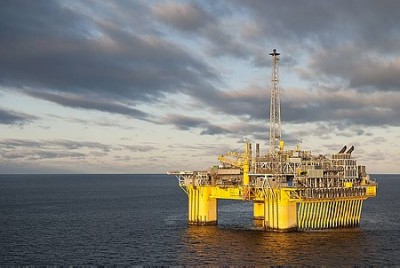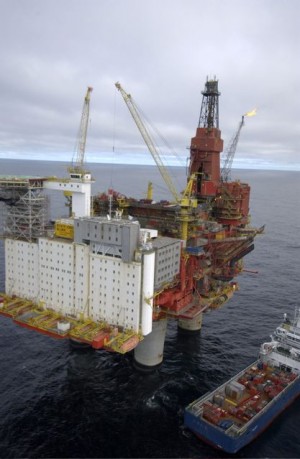Offshore oil installations on the Norwegian Continental Shelf have spilled oil more than 40 times so far this year, according to an overview from Kystverket (The Norwegian Coastal Administration). It’s in charge of oil spill preparedness and admits that oil installations send oil into the sea almost every day.

Newspaper Dagsavisen reported Monday that large quantities of oil are regularly released into Norwegian waters, sometimes with the approval of the authorities. The newspaper gained access to photographs from Kystverket’s surveillance flights that clearly show oil slicks extending from platforms including Draugen, Troll C and Statfjord A during the past year alone.
The oil companies, however, have legal permission to release water that contains oil every year. The slicks registered by Kystverket and seen in the surveillance photos reportedly are within the allotted amounts, but environmental officials think they’re set too high.

“The pictures from Kystverket show that the limits for what’s allowed to spill into the sea should be set lower,” Per-Erik Schulze, an adviser in marine biology and pollution for Naturvernforbundet (Friends of the Earth Norway) told Dagsavisen. He said the oil platform Draugen, for example, has permission to release 600 liters of oil into the sea every 24 hours. Over the course of a year, Schulze noted, that would be comparable to oil spilled during a shipwreck that would set off a major clean-up operation.
News of the “approved” oil spills comes at a time when the oil industry and environmentalists continue to battle over rights to the seas and amidst the ongoing controversy over whether drilling should be allowed off scenic Lofoten and Vesterålen and in sensitive Arctic waters. Norway’s oil industry claims it’s among the cleanest in the world, with oil spill prevention a top priority. The photographic evidence of oil slicks that are several kilometers long and a hundred meters wide suggest otherwise.
“For the first time we have documentation that it’s quite common with long slicks of oil at sea,” Schulze said. He thinks that’s “frightening and absolutely unacceptable.” It would never be accepted, he said, for cargo ships sailing along the Norwegian coast to leave a trail of oil like that.
One oil worker with more than 20 years of experience working on various platforms in the North Sea said that the spills now documented “aren’t illegal, and no one is doing anything criminal, but no one knows what the consequences are.” He noted that the oil installations “are standing right in the middle of our food supplies,” referring to the rich fishing grounds off the Norwegian coast.
“Especially in the years prior to 2000 it could see really dirty with the oil floating around the platforms,” the worker, who didn’t want his name published, told Dagsavisen. “It messed up the sea and gave off oil stink, but it was just a part of everyday life out there.”
Hanne Marie Øren of Norway’s climate and pollution directorate Klif said the agency is considering tougher limits for such oil spills or leaks from offshore installations.
“We’re aware of these episodes and we follow up every case,” Øren told Dagsavisen. “We think it’s very unfortunate with these oil slicks at sea, which can harm seabirds. We have worked to minimize the emissions and continue to do so.”
Asked whether currently allowed levels are too high, she stressed that the legal limit is “the least possible” but that new levels may be set per oil field. “We haven’t come that far yet, but it’s among things we’re working with.” Øren said.
Views and News from Norway/Nina Berglund
Please support our news service. Readers in Norway can use our donor account. Our international readers can click on our “Donate” button:

